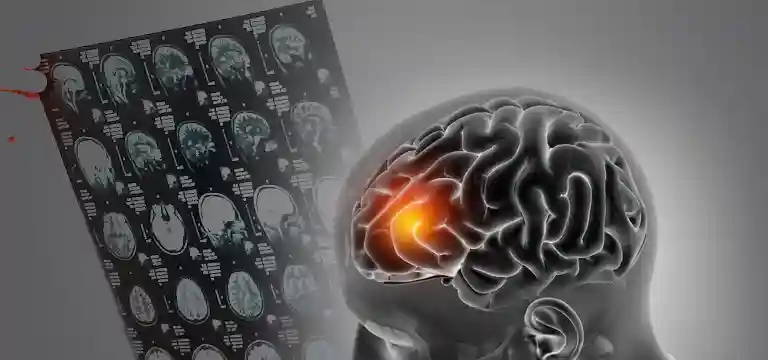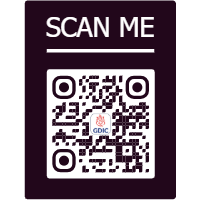
Traumatic brain injuries (TBIs) can have a devastating impact on individuals, affecting their physical, cognitive, and emotional well-being. Early and accurate diagnosis is essential for effective treatment and rehabilitation....
Traumatic brain injuries (TBIs) can have a devastating impact on individuals, affecting their physical, cognitive, and emotional well-being. Early and accurate diagnosis is essential for effective treatment and rehabilitation. In recent years, positron emission tomography (PET) scans have emerged as a valuable tool for evaluating TBIs. In this article, we will explore the diagnostic capabilities and limitations of PET scans in assessing traumatic brain injuries.
Definition and Types of Traumatic Brain Injuries (TBIs)
TBI refers to damage caused to the brain due to external forces. It can be classified into mild, moderate, or severe based on the severity of symptoms and the extent of brain damage.
Causes and Common Symptoms Associated with TBIs
TBIs can occur due to various causes, including falls, vehicle accidents, sports injuries, and assaults. Common symptoms include headaches, dizziness, memory problems, mood changes, and difficulty concentrating.
Importance of Early and Accurate Diagnosis for Effective Treatment
Timely and accurate diagnosis is crucial for developing appropriate treatment plans and interventions. Prompt identification of TBIs allows healthcare professionals to initiate necessary medical interventions and refer patients for specialized care.
Definition and Purpose of PET Scans
PET scans are non-invasive imaging procedures that use a radioactive substance known as a radiotracer to visualize metabolic processes in the body. They provide detailed information about organ function and can be particularly helpful in assessing brain activity and metabolism.
How PET Scans Work in Evaluating Brain Function and Metabolism
PET scans work by detecting the radiation emitted by the radiotracer as it interacts with tissues in the body. In the case of brain imaging, the radiotracer is injected into the patient's bloodstream, and its uptake in different regions of the brain is measured. This allows for the assessment of brain function and metabolism, highlighting areas of abnormal activity.
Advantages of PET Scans over Other Imaging Techniques
PET scans offer several advantages over other imaging techniques when it comes to evaluating TBIs. They provide functional and metabolic information rather than just structural details, allowing for a more comprehensive assessment. Additionally, PET scans can detect subtle changes in brain activity that may not be apparent in other imaging modalities.
PET Scans for Evaluating Traumatic Brain Injuries
The Role of PET Scans in Diagnosing TBIs
PET scans play a crucial role in the diagnosis of TBIs. They provide valuable information about brain function and metabolism, helping healthcare professionals understand the extent and location of brain damage.
Detecting Brain Abnormalities and Identifying Specific Areas Affected by the Injury
PET scans can detect brain abnormalities, such as areas of reduced blood flow or abnormal glucose metabolism, indicating regions affected by the injury. This information helps in understanding the precise location and severity of the brain damage.
Assessing Brain Metabolism and Identifying Regions of Reduced Activity
PET scans allow for the assessment of brain metabolism, highlighting regions with reduced activity. This information is vital in evaluating the functional impact of TBIs and can guide treatment decisions and rehabilitation strategies.
Utilizing PET Scans to Monitor Progress and Evaluate Treatment Effectiveness
PET scans are not only valuable for initial diagnosis but also for monitoring the progress of patients with TBIs. They enable healthcare professionals to assess treatment effectiveness, evaluate recovery trajectories, and make necessary adjustments to the treatment plan.
Diagnostic Capabilities of PET Scans in Evaluating TBIs
Identifying Structural and Functional Brain Abnormalities
PET scans provide a unique combination of structural and functional information, enabling the identification of both overt and subtle brain abnormalities. This comprehensive evaluation aids in determining the extent and nature of the brain injury.
Detecting Focal Injuries and Diffuse Axonal Injuries
PET scans excel in detecting focal injuries, such as contusions and hematomas, as well as diffuse axonal injuries that may not be visible on traditional imaging modalities. This capability enhances the accuracy of TBI assessments.
Evaluating the Extent and Severity of Brain Damage
PET scans assist in evaluating the extent and severity of brain damage by providing insights into the metabolic activity and functional impairment of affected brain regions. This information aids in prognosis and treatment planning.
Assessing the Presence of Secondary Complications, such as Inflammation or Hypoxia
PET scans can help identify secondary complications associated with TBIs, including inflammation or hypoxia. By detecting these complications, healthcare professionals can take appropriate measures to address them and prevent further damage.
Limitations of PET Scans in Evaluating TBIs
Cost and Availability Constraints
PET scans can be expensive, and their availability may be limited in certain healthcare settings. However, considering their diagnostic capabilities, the cost may be justified for accurate TBI assessments.
Radiation Exposure and Associated Risks
PET scans involve exposure to a small amount of radiation. While the risk is minimal, it is essential to weigh the potential benefits against the risks, particularly in cases where repeated scans may be necessary.
Challenges in Differentiating Acute from Chronic Injuries
PET scans may face challenges in distinguishing acute injuries from chronic ones. The metabolic changes observed in chronic injuries can overlap with those of normal aging, making interpretation more complex.
Interpretation Difficulties Due to the Complex Nature of Brain Injuries
Interpreting PET scan results requires expertise due to the complex nature of brain injuries. The integration of clinical data and collaboration between radiologists and neurologists is vital to ensure accurate diagnosis and appropriate treatment planning.
The Importance of Choosing the Right Diagnostic Center: Ganesh Diagnostics
Ganesh Diagnostics, with its unwavering commitment to patient care and accuracy, is the leading diagnostic center for evaluating TBIs using PET scans. Here's why Ganesh Diagnostics stands out:
- State-of-the-art PET scan technology for accurate and reliable results.
- Highly skilled and experienced medical professionals ensuring expert interpretation.
- Comprehensive diagnostic services specifically tailored for evaluating TBIs.
- Multiple conveniently located branches across Delhi, including Rohini, Hari Nagar, Firozabad, Mangolpuri, Model Town, Nangloi, and Yamuna Vihar.
- Availability of multiple panels for customized diagnostic assessments.
- Emphasis on patient care and satisfaction, ensuring a comfortable and supportive environment.
Conclusion
In conclusion, PET scans are powerful diagnostic tools for evaluating traumatic brain injuries. They provide valuable insights into brain function, metabolism, and the extent of damage caused by TBIs. While PET scans have certain limitations, their diagnostic capabilities make them an indispensable part of TBI assessments. When it comes to choosing a diagnostic center for PET scans, Ganesh Diagnostics emerges as the top choice in India, offering advanced technology, experienced professionals, and comprehensive services. If you or your loved ones require evaluation for traumatic brain injuries, trust Ganesh Diagnostics for accurate and reliable PET scan assessments.
FAQs
How do PET scans help in evaluating traumatic brain injuries?
PET scans play a vital role in evaluating traumatic brain injuries by providing information about brain function and metabolism. They can detect brain abnormalities, assess the extent of damage, and monitor treatment effectiveness.
Are PET scans safe for evaluating traumatic brain injuries?
PET scans are considered safe, involving minimal radiation exposure. The benefits of accurate diagnosis outweigh the risks. At Ganesh Diagnostics, we prioritize patient safety and ensure the highest standards of care.
How can PET scans differentiate between acute and chronic brain injuries?
Differentiating acute and chronic brain injuries can be challenging with PET scans alone. However, by integrating clinical data and collaborating with experienced radiologists and neurologists, Ganesh Diagnostics ensures accurate diagnosis and treatment planning.
Are PET scans available at all Ganesh Diagnostics centers?
Yes, PET scans are available at multiple Ganesh Diagnostics centers across Delhi, including Hari Nagar, Budh Vihar, Firozabad, Mangolpuri, Model Town, Nangloi, and Yamuna Vihar. Choose the nearest center for convenient and reliable diagnostic assessments.
Why is Ganesh Diagnostics the best choice for evaluating traumatic brain injuries with PET scans?
Ganesh Diagnostics stands out as the best diagnostic center for evaluating traumatic brain injuries with PET scans due to our state-of-the-art technology, experienced medical professionals, comprehensive services, and commitment to patient care.









